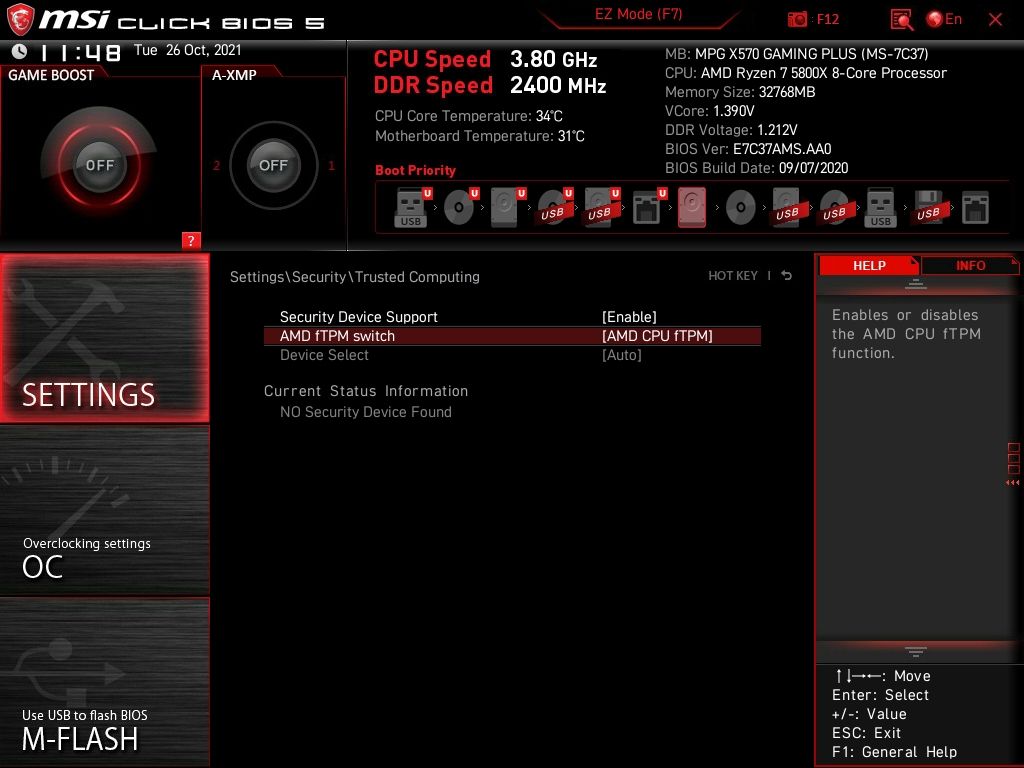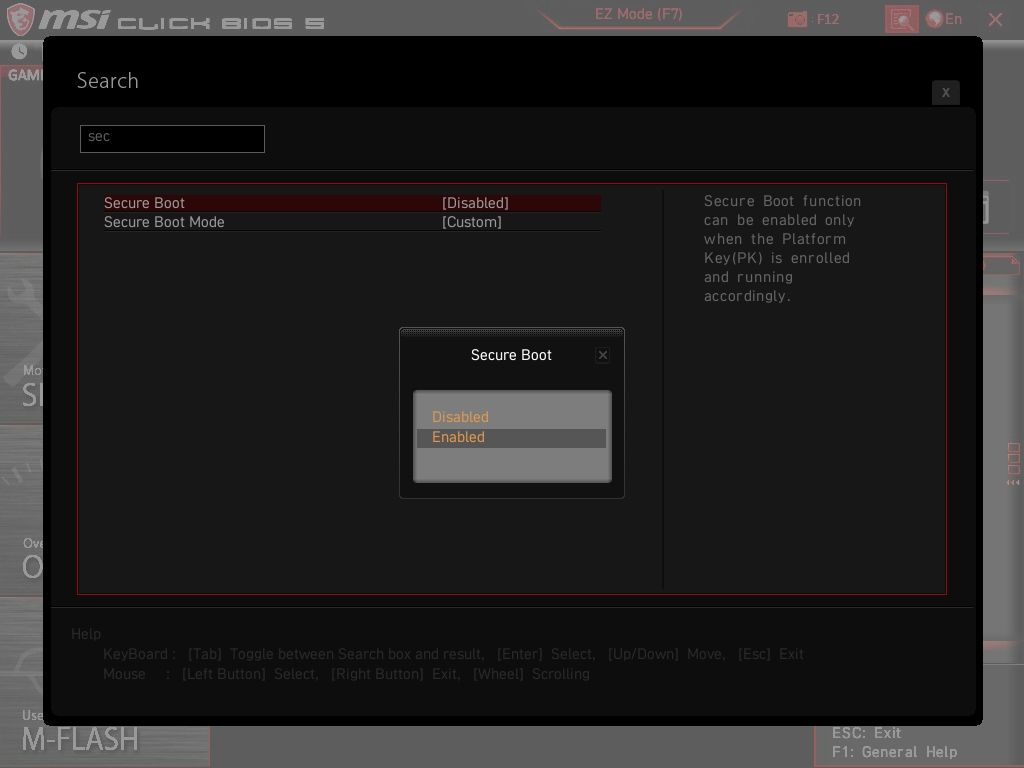 System Tutorial
System Tutorial
 Windows Series
Windows Series
 How to Enable TPM and Secure Boot Before Upgrading to Windows 11
How to Enable TPM and Secure Boot Before Upgrading to Windows 11
How to Enable TPM and Secure Boot Before Upgrading to Windows 11
Considering upgrading to Windows 11? There are a couple of requirements that might stop you in your tracks. We'll explain how to know if your hardware will pass Windows 11's checks.
First up is your physical hardware. If you're not using an AMD Ryzen 3000 series or Intel 7th Gen CPU or better, neither a clean Windows 11 installation nor the Windows 10 upgrade path will work. Second, if your computer doesn't support Secure Boot and TPM, you'll also fall at the initial hurdle. However, all is not lost because you can switch on Secure Boot and TPM from your BIOS/UEFI menu.
What Are Secure Boot and TPM?
The Trusted Module Platform (TPM) is a hardware-level security solution that protects your data from hacking and other data breaches. The TPM holds unique encryption keys stored in such a way that it is nearly impossible for a hacker to access. If someone breaches your computer and your data is encrypted, it will remain secure.
Microsoft's recommended requirements for Windows 11 list TMP 2.0. However, you can still upgrade using a previous version, TPM 1.2, which is the minimum requirement.
Along with TPM 2.0, Microsoft also requires you to activate Secure Boot, a UEFI-level security setting that stops any unauthorized operating system from booting up. Secure Boot is effectively a gatekeeper, stopping malicious code from booting up before your system, and its primary goal is to protect against rootkits, bootkits, and other malicious code.

But it also has some side effects. For example, Secure Boot will stop you from dual-booting Linux distributions, which has led many users to disable Secure Boot.
On top of those two vital features, Windows 11 has specific hardware requirements, with Microsoft opting to block the automatic upgrade path for millions of users. If you're using Windows 10 on an AMD Ryzen 3000 series or later or an Intel 7th Gen CPU or later, you can upgrade to Windows 11 directly.
However, if not, you'll have to opt for a Windows 11 clean install or to bypass Windows 11's minimum requirements. A clean installation of Windows 11 will work on most hardware, but it does come with caveats. Notably, Microsoft has repeatedly stated that it will not provide updates to Windows 11 installations on "unsupported" hardware, so you install at your own risk.
How to Enable TPM and Secure Boot
Trusted Module Platform and Secure Boot are found in your UEFI settings. You'll have to enter system UEFI to enable them before attempting to upgrade to Windows 11. Both settings are found in similar areas, but we'll break the steps down into three parts for ease of reading.
How to Enter Your BIOS/UEFI
There are a couple of ways to enter your system BIOS/UEFI. The old tried and tested method of tapping a keyboard key during bootup still works, but you might not get the chance if you have fast boot enabled. If the boot screens whizz past and you end up in Windows 10, there is another way you can access the BIOS:
- Head to Settings > Update & Security > Recovery > Restart now.
- When your computer restarts, you'll see a big blue screen with several options. Select Troubleshoot > Advanced Options > UEFI Firmware Settings > Restart.
You should be in your BIOS/UEFI settings menu when the computer restarts again.
How to Enable TPM in Your BIOS/UEFI
The location of the TPM settings in your BIOS will differ depending on your motherboard manufacturer. The following images are taken from an X570 MSI motherboard, though where you find the TPM option won't necessarily be similar.

Be aware that the TPM might be listed under a different name on some motherboards, depending on your CPU manufacturer:
- Intel Platform Trust Technology (PTT)
- AMD fTMP
On my motherboard, TPM options are found at Settings > Security > Trusted Computing > TPM Device Selection, where I'll switch on AMD fTMP.
Once switched on, you can save the settings and return to Windows 10. Once Windows boots, you can check your TPM status within the OS to ensure it's running properly.
Press Windows key + R to open the Run dialog, then input tpm.msc and press Enter. The TPM management console will load, indicating if TPM is enabled—and if so, which version you're using.
How to Enable Secure Boot
While you're deep in your system settings, take a moment to check if Secure Boot is enabled.
Like the TPM options, where you find the Secure Boot option will differ depending on hardware, but it is generally located in the Boot tab. Find your Boot tab, scroll down to find the Secure Boot option, and ensure it's enabled.

Note that Secure Boot requires your drives to use GUID Partition Table (GPT) rather than the older master boot record (MBR). As the newer partition table, GPT comes with several enhancements over MBR. If Secure Boot doesn't enable, you may need to convert your MBR drive to GPT.
Alternatively, your computer or hardware may be too old to enable Secure Boot.
Use Microsoft's PC Health Check App to Check If Your Hardware Is Compatible
Microsoft recommends using its PC Health Check App, which you'll find at the bottom of the linked page, to check for hardware compatibility. Download and fire it up to check your system's compatibility with Windows 11.
Alternatively, you could check out WhyNotWin11, an open-source alternative that may provide more detailed insight into your Windows 11 compatibility.
So there you have it. You've enabled two of the most important settings that will block your Windows 11 upgrade path. Once enabled, and presuming you're running compatible hardware, Microsoft will offer you the Windows 11 upgrade. To check if your Windows 11 upgrade is ready, head to Settings > Update & Security > Windows Update, where you'll find the big update button.
The above is the detailed content of How to Enable TPM and Secure Boot Before Upgrading to Windows 11. For more information, please follow other related articles on the PHP Chinese website!

Hot AI Tools

Undresser.AI Undress
AI-powered app for creating realistic nude photos

AI Clothes Remover
Online AI tool for removing clothes from photos.

Undress AI Tool
Undress images for free

Clothoff.io
AI clothes remover

Video Face Swap
Swap faces in any video effortlessly with our completely free AI face swap tool!

Hot Article

Hot Tools

Notepad++7.3.1
Easy-to-use and free code editor

SublimeText3 Chinese version
Chinese version, very easy to use

Zend Studio 13.0.1
Powerful PHP integrated development environment

Dreamweaver CS6
Visual web development tools

SublimeText3 Mac version
God-level code editing software (SublimeText3)

Hot Topics
 1664
1664
 14
14
 1423
1423
 52
52
 1317
1317
 25
25
 1268
1268
 29
29
 1243
1243
 24
24
 Windows kb5054979 update information Update content list
Apr 15, 2025 pm 05:36 PM
Windows kb5054979 update information Update content list
Apr 15, 2025 pm 05:36 PM
KB5054979 is a cumulative security update released on March 27, 2025, for Windows 11 version 24H2. It targets .NET Framework versions 3.5 and 4.8.1, enhancing security and overall stability. Notably, the update addresses an issue with file and directory operations on UNC shares using System.IO APIs. Two installation methods are provided: one through Windows Settings by checking for updates under Windows Update, and the other via a manual download from the Microsoft Update Catalog.
 Nanoleaf Wants to Change How You Charge Your Tech
Apr 17, 2025 am 01:03 AM
Nanoleaf Wants to Change How You Charge Your Tech
Apr 17, 2025 am 01:03 AM
Nanoleaf's Pegboard Desk Dock: A Stylish and Functional Desk Organizer Tired of the same old charging setup? Nanoleaf's new Pegboard Desk Dock offers a stylish and functional alternative. This multifunctional desk accessory boasts 32 full-color RGB
 Got an AMD CPU and Aren't Using PBO? You're Missing Out
Apr 12, 2025 pm 09:02 PM
Got an AMD CPU and Aren't Using PBO? You're Missing Out
Apr 12, 2025 pm 09:02 PM
Unlocking Ryzen's Potential: A Simple Guide to Precision Boost Overdrive (PBO) Overclocking your new PC can seem daunting. While performance gains might feel elusive, leaving potential untapped is even less appealing. Fortunately, AMD Ryzen processo
 ASUS' ROG Zephyrus G14 OLED Gaming Laptop Is $300 Off
Apr 16, 2025 am 03:01 AM
ASUS' ROG Zephyrus G14 OLED Gaming Laptop Is $300 Off
Apr 16, 2025 am 03:01 AM
ASUS ROG Zephyrus G14 Esports Laptop Special Offer! Buy ASUS ROG Zephyrus G14 Esports Laptop now and enjoy a $300 offer! Original price is $1999, current price is only $1699! Enjoy immersive gaming experience anytime, anywhere, or use it as a reliable portable workstation. Best Buy currently offers offers on this 2024 14-inch ASUS ROG Zephyrus G14 e-sports laptop. Its powerful configuration and performance are impressive. This ASUS ROG Zephyrus G14 e-sports laptop costs 16 on Best Buy
 How to Use Windows 11 as a Bluetooth Audio Receiver
Apr 15, 2025 am 03:01 AM
How to Use Windows 11 as a Bluetooth Audio Receiver
Apr 15, 2025 am 03:01 AM
Turn your Windows 11 PC into a Bluetooth speaker and enjoy your favorite music from your phone! This guide shows you how to easily connect your iPhone or Android device to your computer for audio playback. Step 1: Pair Your Bluetooth Device First, pa
 5 Hidden Windows Features You Should Be Using
Apr 16, 2025 am 12:57 AM
5 Hidden Windows Features You Should Be Using
Apr 16, 2025 am 12:57 AM
Unlock Hidden Windows Features for a Smoother Experience! Discover surprisingly useful Windows functionalities that can significantly enhance your computing experience. Even seasoned Windows users might find some new tricks here. Dynamic Lock: Auto
 Microsoft Might Finally Fix Windows 11's Start Menu
Apr 10, 2025 pm 12:07 PM
Microsoft Might Finally Fix Windows 11's Start Menu
Apr 10, 2025 pm 12:07 PM
Windows 11's Start Menu Gets a Much-Needed Overhaul Microsoft's Windows 11 Start menu, initially criticized for its less-than-intuitive app access, is undergoing a significant redesign. Early testing reveals a vastly improved user experience. The up
 You Can Get The Razer Basilisk V3 Pro Mouse for 39% off
Apr 09, 2025 am 03:01 AM
You Can Get The Razer Basilisk V3 Pro Mouse for 39% off
Apr 09, 2025 am 03:01 AM
##### Razer Basilisk V3 Pro: High-performance wireless gaming mouse The Razer Basilisk V3 Pro is a high-performance wireless gaming mouse with high customization (11 programmable buttons, Chroma RGB) and versatile connectivity. It has excellent sensors, durable switches and extra long battery life. If you are a gamer looking for a high-quality wireless mouse and need excellent customization options, now is a great time to buy the Razer Basilisk V3 Pro. The promotion cuts prices by 39% and has limited promotion periods. This mouse is larger, 5.11 inches long and 2 inches wide



